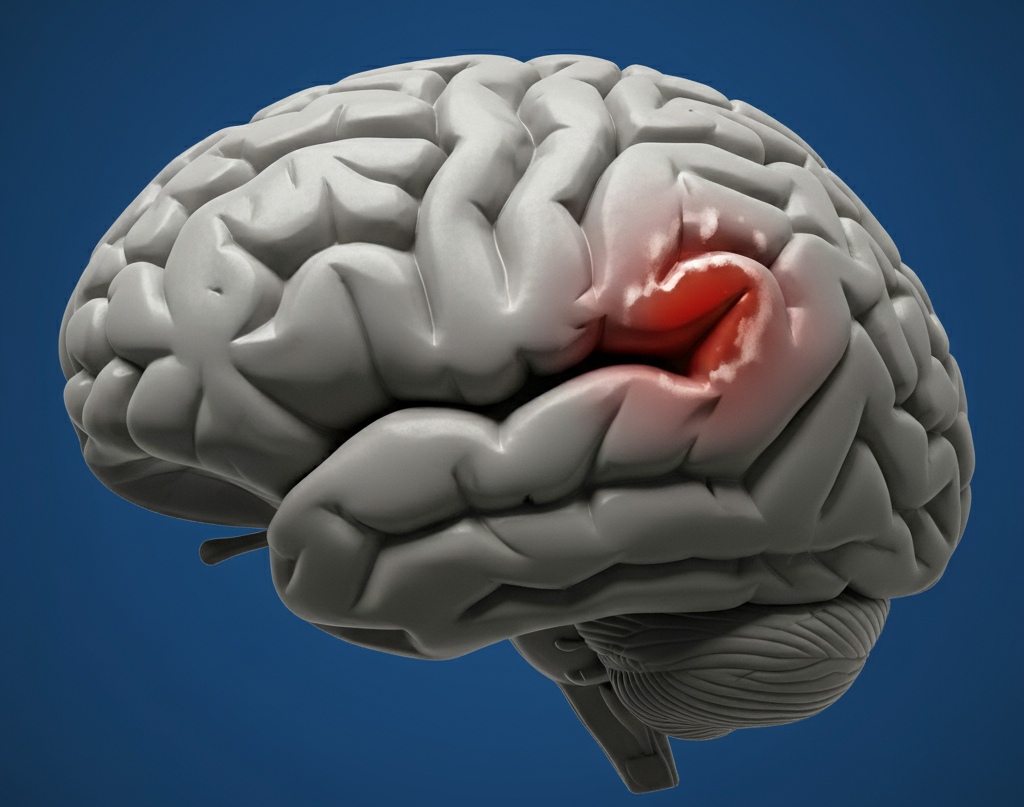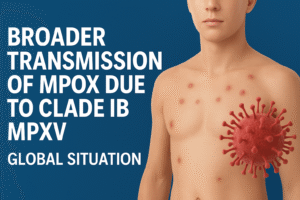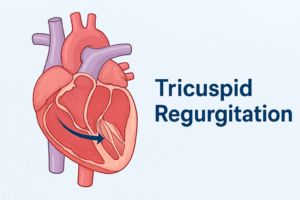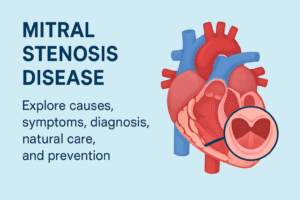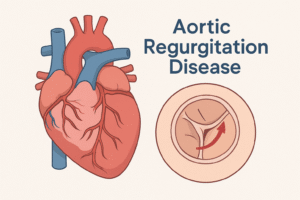Stroke has been called a “brain attack,” and for good reason. It strikes suddenly, often without warning, and can change lives in seconds. According to the World Health Organization (WHO), stroke is the second leading cause of death worldwide and a major cause of long-term disability.
But here’s the good news—most strokes can be prevented with the right knowledge and lifestyle choices.
This article dives deep into the world of strokes, exploring the types, causes, warning signs, natural management strategies, and global impact.
What Exactly is a Stroke?
A stroke occurs when blood flow to the brain is interrupted or a blood vessel bursts, cutting off oxygen to brain tissue. Without oxygen, brain cells start dying within minutes.
- Ischemic Stroke (≈87% of cases, CDC 2023): Caused by a clot or blockage in a brain artery.
- Hemorrhagic Stroke: Caused by bleeding inside or around the brain due to a ruptured blood vessel.
Both are medical emergencies, but they differ in cause, treatment, and outcome.
Hidden Triggers – What Causes Stroke?
Stroke doesn’t happen by chance. Several underlying conditions and habits increase the risk:
- Ischemic Stroke Causes: Atherosclerosis, blood clots, heart rhythm disorders (like atrial fibrillation), or narrowed arteries.
- Hemorrhagic Stroke Causes: High blood pressure (#1 culprit, WHO 2023), aneurysms, head injuries, blood-thinning drugs, or vascular malformations.
The Journey of a Stroke – Stages Explained
Doctors often describe stroke progression in stages to better understand treatment windows:
- Hyperacute Phase (First Few Hours): Brain cells die rapidly—immediate help is critical.
- Acute Stage (First Day): Symptoms peak; treatment outcomes are determined.
- Subacute Stage (Days to Weeks): Recovery begins, but complications may arise.
- Chronic Stage (Months & Beyond): Long-term rehabilitation and lifestyle changes shape quality of life.
Different Faces of Stroke – Ischemic vs. Hemorrhagic
1. Ischemic Stroke Subtypes
- Thrombotic Stroke: A clot forms inside an artery supplying the brain.
- Embolic Stroke: A clot travels from elsewhere (like the heart) and blocks a brain artery.
2. Hemorrhagic Stroke Subtypes
- Intracerebral Hemorrhage: Bleeding inside brain tissue.
- Subarachnoid Hemorrhage: Bleeding in the space between the brain and skull.
Red Flags You Should Never Ignore
The American Stroke Association recommends remembering the acronym FAST:
- F – Face drooping
- A – Arm weakness
- S – Speech difficulty
- T – Time to call emergency services
Other urgent signs: sudden severe headache, blurred vision, dizziness, loss of balance, and numbness on one side of the body.
How Doctors Uncover a Stroke – Diagnosis
Quick and accurate diagnosis saves lives. Common tools include:
- CT Scan or MRI: Identifies blockages or bleeding.
- Carotid Ultrasound: Detects narrowing in neck arteries.
- Echocardiogram: Checks the heart for clots.
- Blood Tests: Assess clotting, cholesterol, and glucose.
Healing Beyond Pills – Natural & Supportive Treatments
While medication and surgery are lifesaving, non-medical therapies greatly support recovery:
- Physiotherapy & Mobility Training: Regain strength and coordination.
- Speech & Occupational Therapy: Improve communication and daily living skills.
- Meditation & Yoga: Lower stress and enhance circulation.
- Acupuncture (WHO-approved): May aid neurological recovery.
- Lifestyle Adjustments: Quit smoking, reduce alcohol, and stay active.
Shield Yourself – Powerful Ways to Prevent Stroke
A Lancet Neurology (2016) study revealed that 90% of strokes are linked to preventable factors.
Prevention strategies:
- Monitor and control blood pressure.
- Maintain normal blood sugar and cholesterol.
- Exercise 150 min/week (WHO recommendation).
- Eat a heart-healthy diet.
- Avoid tobacco & excessive alcohol.
- Schedule regular health screenings.
Eat Smart, Live Longer – The Stroke-Prevention Diet
Your plate can be your shield against stroke. The American Heart Association (AHA) recommends:
- Load Up On: Fresh fruits, vegetables, whole grains, nuts, seeds, oily fish.
- Limit: Salt, sugary drinks, processed foods, red meats, trans fats.
- Choose: Healthy oils (olive, avocado), lean proteins (chicken, legumes).
Who is at Risk? Key Factors to Watch
- Unchangeable Risks: Age (55+), family history, gender (men have higher risk; women often face worse outcomes).
- Changeable Risks: High blood pressure, diabetes, obesity, smoking, cholesterol, physical inactivity.
Beyond Borders – The Global Burden of Stroke
- WHO Reports: 15 million people suffer a stroke every year—5 million die, and another 5 million are left permanently disabled.
- Economic Strain: In the U.S., stroke costs exceed $56 billion annually (CDC, 2023).
- Low- & middle-income countries carry the heaviest burden due to limited healthcare.
- Global Goal (WHO): Cut premature deaths from stroke & cardiovascular disease by 25% by 2025.
Final Thoughts – Your Best Defense Against Stroke
Stroke is sudden, but not inevitable. With early recognition, lifestyle changes, and preventive care, millions of cases can be avoided.
As WHO emphasizes, knowledge is the most powerful tool against this silent killer.
A healthy lifestyle—balanced nutrition, regular exercise, stress management, and routine check-ups—remains the ultimate shield for brain & heart health.
Frequently Asked Questions (FAQs)
1. Can stroke be cured without medicine?
Medical treatment is essential for survival, but therapies like physiotherapy, speech therapy, yoga, and lifestyle changes support recovery.
2. What foods reduce the risk of stroke?
Fruits, vegetables, whole grains, lean proteins, nuts, omega-3 fatty acids. Reduce salt, sugar, and trans fats.
3. What is the first sign of a stroke?
Facial drooping, arm weakness, and slurred speech. Severe headaches and sudden dizziness are common in hemorrhagic strokes.
4. Who is most at risk of having a stroke?
People over 55, with high blood pressure, diabetes, obesity, cholesterol issues, smokers, or family history of stroke.
5. Can stress cause a stroke?
Chronic stress indirectly increases risk by raising blood pressure and encouraging unhealthy habits. Stress management is vital.
6. How can stroke be prevented naturally?
Regular exercise, healthy eating, maintaining normal weight, controlling BP & sugar, avoiding smoking/alcohol, meditation.
sources –

